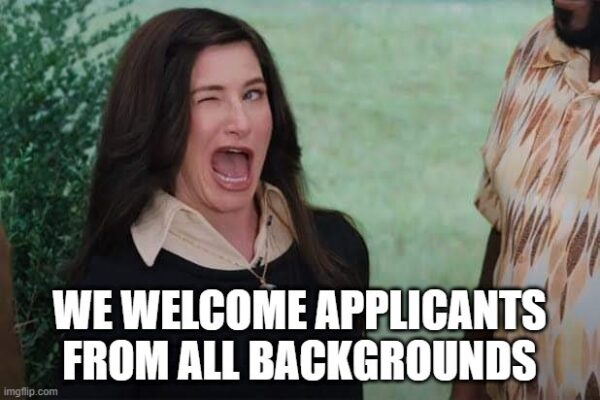This week, we have a guest post by Azeem Ahmad, the founder of Inclusionflows.com. Azeem outlines some ways that organisations can start to move beyond just compliance with the Equality Act, and towards culture change for inclusive employment for disabled people.
Recruitment is broken – Accessibility is the answer
You might not think there’s anything wrong with the way you’re recruiting. Your current methods (probably) get you applicants who become competent employees and progress through your organisation. Or go on to have successful careers elsewhere which is also a good thing.
So here I am, a stranger who knows nothing about your organisation telling you that you’re doing it wrong. The brass neck! You can easily prove me wrong with data;
- Who is applying for your vacancies?
- Who is getting shortlisted?
- Who is getting job offers?
- Who is being paid the most?
- Who is absent?
- Who is leaving?
- Who feels included?
- Who is raising grievances?
- Who is being disciplined?
- Who is being promoted?
I don’t use data as a stick to beat organisations with, I use it as a step to build a new narrative. I also get a bit of a kick from using data to demonstrate the diversity that already exists within your organisation; age, gender and marital status are just some of the things that people don’t really think about when it comes to diversity. Too often diversity is code for “BAME and wheelchair users”.
If you think that adding ‘we welcome applicants from all backgrounds’ is a solution then, bluntly, you’re wrong. It screams that there is a deficit of diversity in your organisation and that you don’t think it’s your fault.

Recruitment is marketing
Imagine an executive meeting at Apple where they’re trying to understand why a category of potential customers isn’t buying from them and someone suggests ‘why don’t we just tell those people they can buy our products?’. They’d be laughed out of the building.
The rest of the meeting would be about creating desire, solving customer problems and making it as easy as possible for people to purchase from them. Whatever their solution is, it won’t be at the expense of making it harder for people in other groups to buy from them. Did Apple get to 1.5 billion iPhone users (with an almost 50/50 gender split*) through ultra-segmentation, or by developing products that work for everyone?
These are just some of the ways you can make your recruitment process more accessible to all:
- Simplify your job descriptions and adverts
- Objectives and outcomes are more important to an applicant than your company history or your free coffee and keeping these focussed will cut your shortlisting time dramatically. Bonus points are available for linking objectives to your values.
- Get rid of desirable criteria in person specifications. You either need a skill to do a job or you don’t.
- Think very carefully about required qualifications. Academic history doesn’t tell you everything about someone’s ability. We have a calculator, spellchecker and search engine within reach most of the time.
- Accept that CVs and cover letters are a waste of everyone’s time. Applicants hate writing them (especially when they have to write multiple versions for different jobs) and let’s be honest, as recruiters we only pay limited attention to them.
- Show the salary – Expecting people to invest in an application without knowing the potential reward is bizarre. “Competitive” isn’t a number. And please don’t pretend that statutory minimum leave allowances are a benefit.
- Show the working environment – this is especially vital for people with mobility issues who need to recruit a building as well as an employer. Home-working is great but it should either be the default for everyone or optional for everyone.
- Advertise on and offline but make sure they are where people are looking (think beyond diverse job boards) and that support is available for people who have difficulties completing an application. That is very different to offering an “informal chat”.
That might sound like a lot to do, but you can achieve this in a 2 minute video shot on your phone. Post the video with audio descriptions and subtitles, then use the transcript for your text adverts.
Over time you will start to see your applicant profile becoming more representative of your community. But it might not translate into more diversity amongst your workforce – which isn’t necessarily a problem. Recruitment is a numbers game and a perfectly representative process will only give you a 1 in 5 chance of the successful candidate having a disability.
Creating opportunity is something that we need to take collective responsibility for. We can only influence the wider world. But we can control how accessible our organisations are. What’s stopping you?
Azeem Ahmad is the Founder of InclusionFlows.com, a Newcastle based strategic inclusion consultancy specialising in culture change, performance and inclusion. Azeem’s lived and professional experience includes race, mental health and neurodiversity.
*https://www.demandsage.com/iphone-user-statistics/
